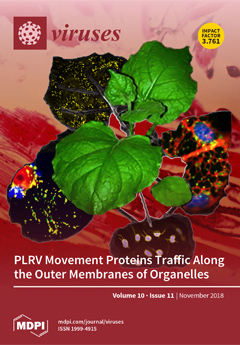To evaluate the effects of ZIKV infection on non-human primates (NHPs), as well as to investigate whether these NHPs develop sufficient viremia to infect the major urban vector mosquito,
Aedes aegypti, four cynomolgus macaques (
Macaca fascicularis) were subcutaneously infected with
[...] Read more.
To evaluate the effects of ZIKV infection on non-human primates (NHPs), as well as to investigate whether these NHPs develop sufficient viremia to infect the major urban vector mosquito,
Aedes aegypti, four cynomolgus macaques (
Macaca fascicularis) were subcutaneously infected with 5.0 log
10 focus-forming units (FFU) of DNA clone-derived ZIKV strain FSS13025 (Asian lineage, Cambodia, 2010). Following infection, the animals were sampled (blood, urine, tears, and saliva), underwent daily health monitoring, and were exposed to
Ae. aegypti at specified time points. All four animals developed viremia, which peaked 3–4 days post-infection at a maximum value of 6.9 log
10 genome copies/mL. No virus was detected in urine, tears, or saliva. Infection by ZIKV caused minimal overt disease: serum biochemistry and CBC values largely fell within the normal ranges, and cytokine elevations were minimal. Strikingly, the minimally colonized population of
Ae. aegypti exposed to viremic animals demonstrated a maximum infection rate of 26% during peak viremia, with two of the four macaques failing to infect a single mosquito at any time point. These data indicate that cynomolgus macaques may be an effective model for ZIKV infection of humans and highlights the relative refractoriness of
Ae. aegypti for ZIKV infection at the levels of viremia observed.
Full article






